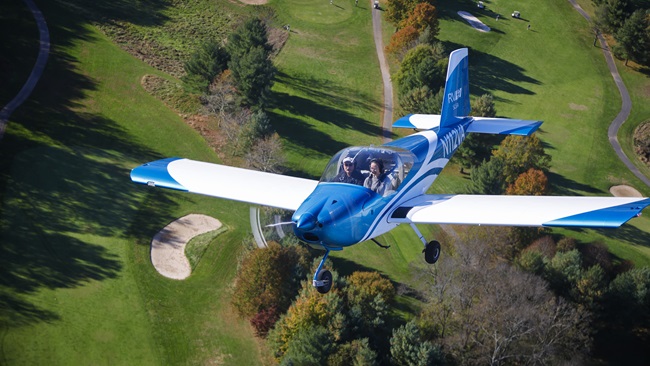An exotic vehicle listed for sale by an Arizona automobile auction house has rekindled memories of an ambitious attempt to use vertical takeoff and landing technology to build a machine that could lift you from your home’s driveway above the daily commuter crush and set you down at an urban heliport. Then you’d take a short ride on public transportation to work.
But even if the 1990 prototype Sky Commuter listed by Barrett-Jackson, which calls itself "the world’s great collector car auctions," sells during bidding open through Jan. 18, no flights of the VTOL aircraft are contemplated.
"Developed by Boeing engineers, reports indicate that more than $6 million went into the program before it was cancelled. Of the three prototypes built, this is the sole remaining example. The engine nacelle is empty except for a simulated fan assembly; the Sky Commuter is nonfunctional," the listing says.
If there’s a vaguely familiar ring to this narrative, perhaps it is because the Sky Commuter isn’t making its first appearance in the public marketplace. In 2008, the prototype showed up on eBay generating a buzz similar to the notice it is attracting now—and at that time, fetching a six-figure bid.
Hopes had reportedly run high for the Sky Commuter before an abrupt shutdown of the development project that had been in progress at the Arlington, Washington, Municipal Airport.
The Sky Commuter’s chief developer, mechanical engineer Fred Barker, had the credentials to get such a creation off the ground. He had worked on structures and wings of large jets at Boeing, and subsequently run a company that "designed and developed vertical take-off and landing aircraft under a U.S. Department of Defense contract," according to this biography.
The basic idea was to create propulsion via an engine linked via helicopter-like drive shafts to fans fore and aft on the two-seat, canopied vehicle. Thrust from a rear-venting exhaust system would provide ground mobility, since the wheels would be "non-powered," according to the auction house’s description.
Then as now, the possibilities commanded popular appeal as measured by a turnout of 200 enthusiasts who each paid $6 a ticket to hear a talk that Barker and another aviation visionary, Aerocar designer Moulton Taylor, gave on their projects at the Seattle Museum of Flight in May 1990.
Describing the Sky Commuter as resembling "a go-cart with fans," a 1990 Seattle Times report of the session credited the designers for "the sheer audacity" to pursue their dreams.
But the article—which reported Barker’s assertion that the Sky Commuter had flown tethered and might soon carry a pilot—hinted at disappointment that neither aircraft offered an immediate realization of an urban commuter’s fantasy of rising above snarled road traffic and touching down a few steps from the office.


